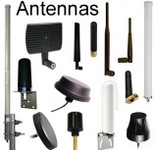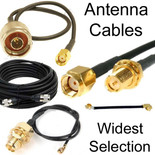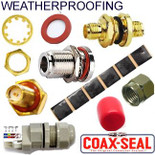Antennas, Antenna Cables, Wireless Products: Technical Articles
Bend Radius of LMR-100, LMR-200, LMR-400 Coaxial Cable Types
Listen to article
Audio generated by DropInBlog's Blog Voice AI™ may have slight pronunciation nuances. Learn more
Minimum Bend Radiuses of LMR-100, LMR-200 and LMR-400

The bend radius of a coaxial cable refers to the minimum radius a cable can be bent without damaging it or degrading its performance. The minimum bend radiuses for these cables are as follows:
- LMR-100: This is a smaller diameter cable and has a minimum bend radius of 0.25 inches (6.4 mm). This allows for relatively tight bends compared to thicker coaxial cables.
- LMR-200: This cable is twice the thickness of LMR100, and has a minimum bend radius of 0.5 inches (12.7 mm). It offers a good balance between flexibility and low signal loss.
- LMR-400: Having twice the diameter of LMR-200 and quadruple the diameter of LMR-100, it is a significantly more rigid cable. LMR-400 has a minimum bend radius of 1 inch (25.4 mm) when bending in a single plane. When bending in multiple planes, a larger radius may be required to avoid damaging the cable.
Exceeding the minimum bend radius of a coaxial cable can have these negative consequences:
- Physical Damage: Over-bending can damage the cable's internal structure. This includes kinking, crushing, or deforming the outer conductor, inner conductor, or dielectric insulator. Such physical deformations can be permanent and may not be visually apparent.
- Impedance Mismatch: Coaxial cables are designed to maintain a specific impedance, typically 50 or 75 ohms. Bending a cable too sharply can alter this impedance, leading to impedance mismatches. This mismatch can cause signal reflections, leading to poor signal quality or loss.
- Signal Attenuation: Excessive bending can lead to increased signal loss (attenuation). The physical deformation of the cable changes the path the signal must travel, potentially increasing the distance or creating disruptions that weaken the signal.
- Shielding Effectiveness Reduction: The shielding of cables that protects against external electromagnetic interference (EMI) can be compromised. When a cable is bent too sharply, the effectiveness of the shielding can be reduced, making the cable more susceptible to external noise and interference.
- Reduced Cable Lifespan: Repeated bending or maintaining the cable in an over-bent position can lead to metal fatigue in the conductors and shielding, resulting in a reduced lifespan of the cable.
- Electrical Short or Open Circuit: In extreme cases, over-bending can lead to an electrical short or an open circuit if the inner conductor or insulator is damaged severely. This would result in complete failure of the cable to transmit signals.
To avoid these issues, it's important to adhere to the above specifications for bend radius and handle coaxial cables with care during installation and maintenance.








